Summer is the best time to hike: the snow has melted, the flowers are blooming, and the skies are blue. But unfortunately, that also means it can often get ridiculously hot, so you need to know how to go hiking in hot weather.
I’m really heat-sensitive, but I always want to go hiking even if it’s way too warm out. After years of experience (and some not-so-awesome trips where the heat really beat me), here are my tips for hiking in the heat.
Hey there: Some of the links in this post are affiliate links, which means I earn a small commission at no cost to you. Thanks for your support. -Taryn
Acclimatize to the Heat
If you aren’t used to the heat, it can decimate your energy levels. You will hike much slower and get tired earlier than usual. That means that you can’t just jump into your regular hikes when it is hot out. You have to start easy until you have acclimatized to the heat.
Depending on where you live, you may be able to go hiking just gradually acclimatize by ramping up to longer and harder hikes. It can take about two weeks to get used to hot weather. But that doesn’t work if you live in a place that is usually fairly cold.
You can also deliberately expose yourself to heat to acclimatize yourself ahead of hot weather. It’s possible to work on your heat tolerance through sauna, hot tub, or hot yoga sessions.
Pick the Right Hike
If it’s really hot out you will get tired more easily, so you may also want to pick a shorter or easier hike than normal. Heat also saps your energy, so your hiking pace will likely be slower than usual.
A hot day with lots of sunshine may not be the best day for ridgeline or mountain top hikes that get full sun. In scorching weather, pick a forested hike with lots of shade.
When it’s really warm out, I also like to pick a hike near a river or lake. Often the air is cooler near the water, which can be refreshing. Plus, the best way to cool down is to jump into chilly water… which leads to my next tip, below.
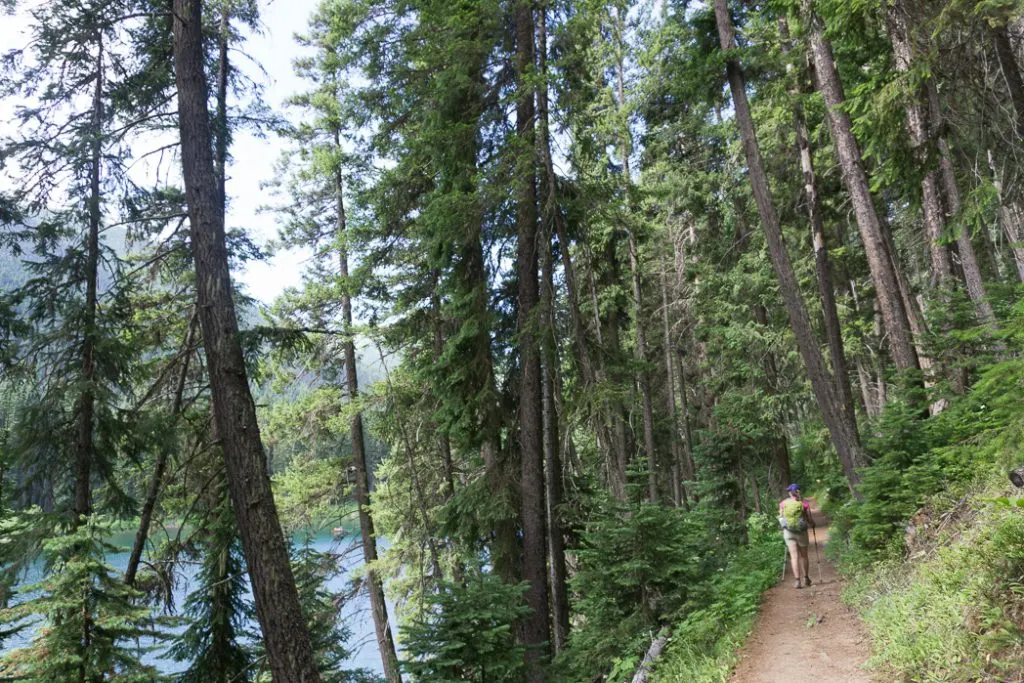
Get Wet
Cool water is a great way to reduce your body temperature. I like to dunk my hat in every stream I pass. Some hikers also like to wear a wet bandana or buff around their neck or even soak a shirt in a stream, then put it on.
A swim is also a great way to beat the heat when hiking. You can pack a swimsuit, go in your underwear, or just jump in wearing your hiking clothing.
Leave No Trace Tip: Make sure you wipe off any sunscreen or bug spray before you go swimming to avoid harming plants and fish.

Cool Down with Snow
Snow can be both a blessing and a curse on a hot day. Unfortunately, the bright surface of snow reflects light, which can give you a wicked sunburn. (The reflections from snow can burn some strange places like the inside of your nose and the roof of your mouth!)
But on the upside, hikes with patches of snow can be a great way to cool on when hiking in hot weather. Stop to do snow angels! Have a snowball fight!
I like to put a snowball under my hat or in the hood of my sun shirt. Rubbing a snowball on the pulse points in your wrists or the base of your skull can also help lower your body temperature.
Avoid Hiking at the Hottest Times of the Day
It’s usually the hottest in the afternoon, around 3 or 4 pm when the heat of the day really begins to build up. Instead of hiking when it’s super hot out, plan a sunrise hike so you are off the trail in time for lunch. Or head out after dinner for a sunset hike. For either option, don’t forget a headlamp!
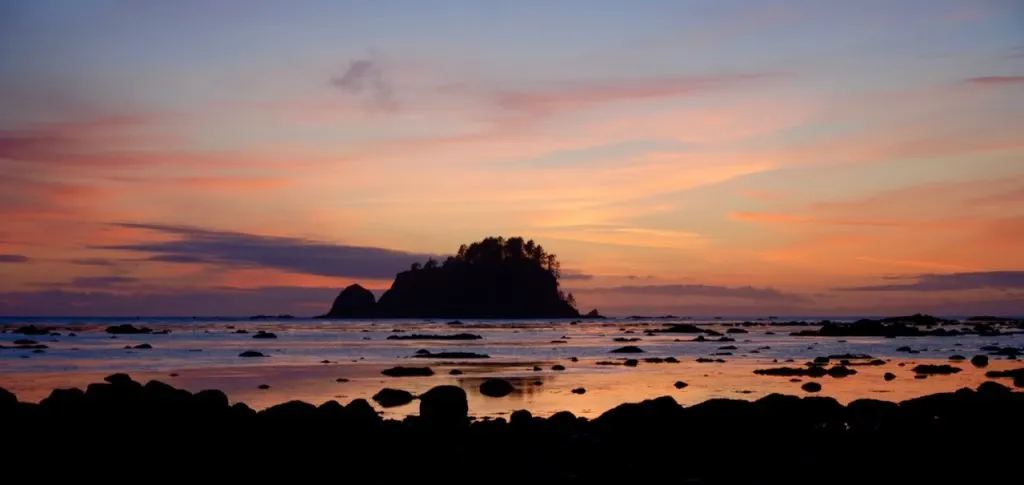
Drink Lots of Water
It’s easy to get dehydrated when it’s really hot out. Your body cools itself through sweating, so if the temperature is high, you are going to sweat a lot. Unless you replace that sweat by drinking water, you’ll get dehydrated.
At best, the symptoms of dehydration include increased thirst and peeing less often. At worst, you might experience headache, dizziness, nausea, fatigue, confusion, and vomiting. Not fun.
Bring lots of water with you. How much to bring depends on how hot it is out, how far you plan to hike, and may also vary by person. However, keep in mind that while hiking in hot weather, some people will need to consume up to 1L of water per hour. That’s a lot!
If I am planning to hike in hot weather I will often plan to get some water along the way instead of carrying it all with me. (Water is heavy!) Do some research and pick a trail with a reliable water source. I bring my Katadyn BeFree water filter so I can treat the water before I drink it.
I also keep water purification tablets in my first aid kit for times when I don’t have my filter with me. They are pretty cheap and last for years. However, I find that they add a little bit of a chemical taste to water and take 30 minutes to work, so I save them for emergencies.
Pro tip: Know before you go. You don’t want to get to a stream and discover it has dried up. Find out how to check trail conditions online before you go.
I use a hydration reservoir so that I can take small sips of water as I hike. I use a Platypus Big Zip EVO reservoir. Sometimes I also bring collapsible Platypus SoftBottles to hold extra water since they pack down easily when empty.
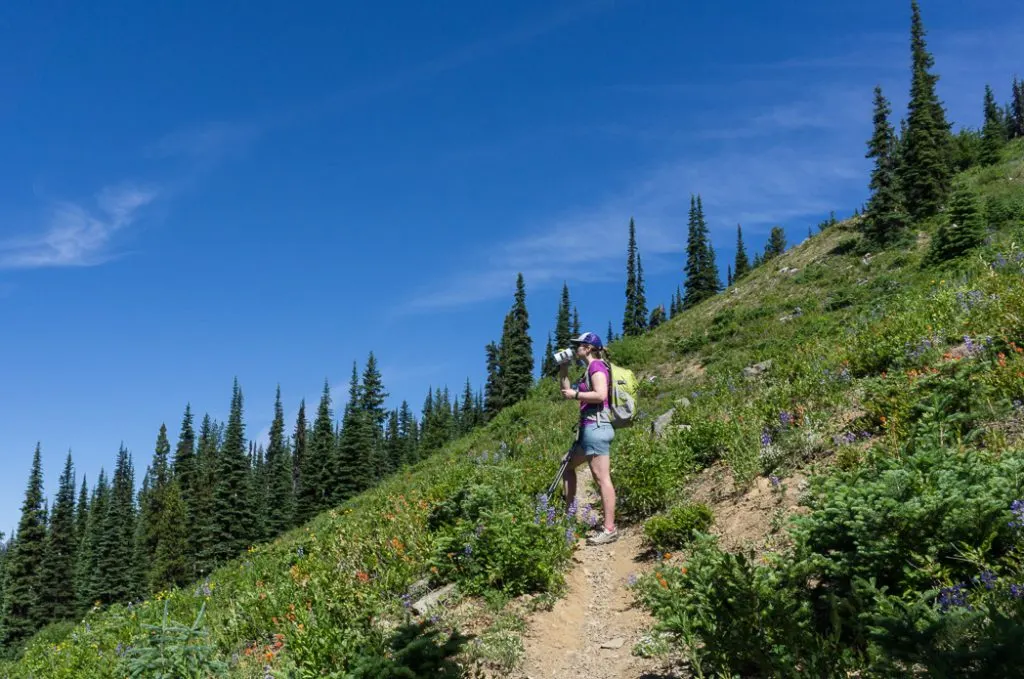
Keep Your Electrolyte Levels Up
Drinking water is not be enough to keep you hydrated. We all know that sweat contains salt (aka sodium) but did you know it also contains potassium and other minerals known collectively as electrolytes?
When you have depleted electrolyte levels you may experience similar symptoms to dehydration plus the bonus of muscle cramps. Definitely no fun.To ensure you don’t end up with low electrolytes, drink a sports drink that contains added sodium, potassium, and other minerals.
Bottled sports drinks are heavy, expensive, and often full of sugar. Powdered or tablet alternatives can be much cheaper. They are also easy to carry with you so you can add them to water on the go and customize the strength of the mixture.
There are lots of options out there including Gatorade, Nuun, DripDrop, and more. Lately, my favourite is Liquid I.V. They have flavours that use real sugar, which I appreciate since I don’t like the taste of artificial or alternative sweeteners, and some of them do bag things to my guts.
Prepare for Low Appetite
When it’s hot out, many people don’t feel hungry. It’s also common to get indigestion or nausea. I often have to force myself to eat when it’s really hot out because I know from experience that if I don’t eat, I’ll feel even worse.
Over time, you will figure out what foods work for you in hot weather. I often bring a variety of things in the hopes that something I pack will appeal to me. Salty snacks like trail mix are great for replenishing salt.
Snacks that have lots of electrolytes are also a good idea. If I’m feeling really off, the one thing that I can reliably eat is energy chews, like Gu Energy Chews, Honey Stinger Energy Chews, or Clif Shot Bloks. They have lots of electrolytes and are a good source of quick-to-digest carbs.
Wear Sun Screen
Getting a sunburn is a surefire way to feel even hotter than you already do. Wearing sunscreen is always a good idea when you’re hiking, but it can be challenging on a really hot day since your sweat will wash it off.
You can try using sweat-resistant sports sunscreen, but you’ll still have to reapply it often. I like Sun Bum Sunscreen since it stays on fairly well and is reef safe. Their hands-free sticks are great for putting more sunscreen on your nose on the go.
Wear Sun Protective Clothing
Instead of having lots of exposed skin and relying on sunscreen, you could choose to wear a wide-brimmed hat and a lightweight long-sleeved shirt for sun coverage instead. When your sweat soaks your hat and shirt, it actually helps to keep you cool!
My favourite sun hat is the Sunday Afternoons Ultra Adventure Hat. It has a wide brim in the front and a cape in the back to protect your neck. It’s made of really light fabric and the brim folds so it’s easy to stuff in your pack. And the best feature – it has slots in the brim to hold your sunglasses!
Lately, I’ve been wearing a long-sleeved sun hoody to avoid having to reapply sunscreen as often. The Mountain Hardwear Crater Lake Long Sleeve Hoody provides UPF 50+ sun protection but is made of lightweight fabric so it doesn’t feel too hot.
I’ve got more sun hoody reviews and a full guide to how to choose a sun hoody in my guide to the best sun hoodies for hiking.
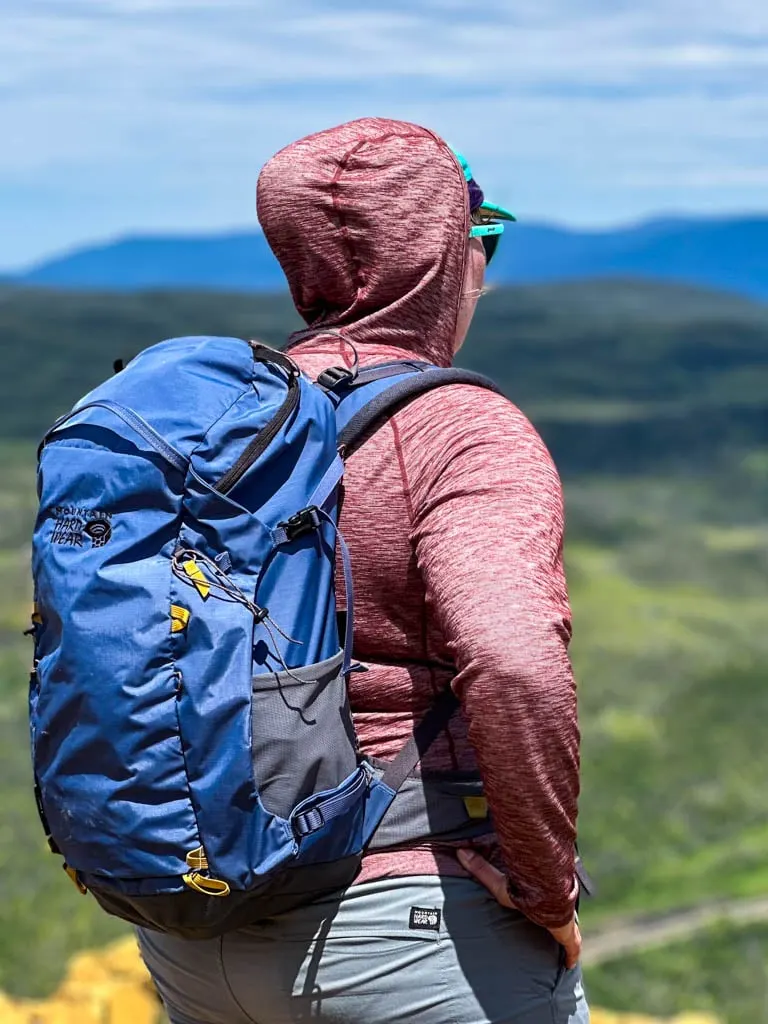
Use an Umbrella
This tip might sound strange, but it’s a popular strategy with desert hikers: use an umbrella for shade. When I trekked to Annapurna Base Camp in Nepal the weather at lower elevations was so hot and muggy that I found using an umbrella for shade helpful. It looked dorky, but it really worked!
You can figure out a way to attach an umbrella to your backpack straps MacGyver-style to keep your hands free. Thru-hikers on the Pacific Crest Trail often use specialized ultralight umbrellas for both rain and sun protection. (They aren’t a good choice for windy days or brushy trails though.)
Manage Your Sweat
When it’s hot, you’re going to sweat. As I already mentioned, sweating depletes your electrolytes and washes off your sunscreen. But there are a couple of other ways that sweating can affect your hike.
Firstly, it gets in your eyes and that stings, especially if you wear contacts like me! I use a face cloth-sized PackTowl to mop my forehead. It’s a microfibre travel towel that dries quickly and has a snap loop so you can attach it to your pack for easy access. I always bring one when hiking in hot weather.
Secondly, if you get sweaty feet, you can be prone to blisters. Wear well-ventilated hiking shoes if possible (you don’t need those big waterproof leather hiking boots on hot dry days). I wear Salomon XA Pro trail runners when it’s hot out.
Choose synthetic and wool blend socks that breathe well and don’t absorb moisture. Bring an extra change of socks to swap out at your halfway point. My favourites are the Darn Tough Light Hiker Micro Crew socks.
Pack extra bandaids and blister dressings and be sure to stop and tend to your feet at the first sign of a hot spot. Don’t wait until you have a giant disgusting blister! Need more blister tips? I’ve got a whole post on How to Prevent Blisters When Hiking!
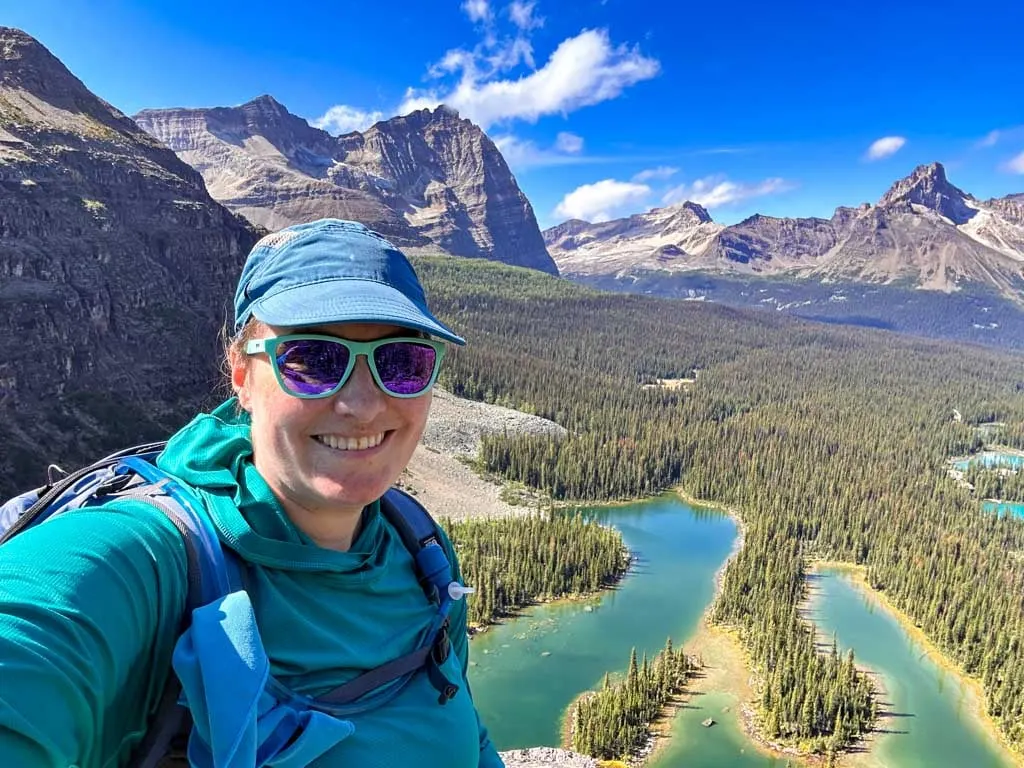
Prevent Chafing
If you’ve never chafed on a hike, consider yourself blessed. Chafing happens when your skin and/or clothing gets damp from sweat or rain and then rubs together. Common places to get chafed include butt cheeks, crotch, and feet. All the fun places!
To prevent chafing choose hiking clothes made of synthetic fibres like polyester or nylon that don’t absorb as much water as cotton or wool. Of course, this applies to your underwear as well! For underwear and sports bras look for seamless options or a version with flat seams. My guide to the best hiking underwear has lots of options.
If you are prone to chafing you may also want to get some anti-chafe sports lubricant like Bodyglide. Apply it before your hike as a preventative and maybe even bring it along with you to reapply. This stuff has literally saved my butt on more than one occasion 🙂 (TMI? Sorry, not sorry!)
If you do end up getting chafed, get some zinc oxide cream, sold as diaper rash cream. Babies know what’s up – it works fast to soothe chafed skin. I often carry a tiny travel size tub of this on backpacking trips.
Know the Signs of Heat Stroke
Heat stroke is no joke. It can actually kill you or damage your organs. Heat stroke happens when your body temperature gets too hot (over 104F/40C).
Symptoms of heat stroke include headache, dizziness, lack of sweating despite the heat, skin that feels hot, muscle cramps, nausea and vomiting, rapid heartbeat and breathing, and confused behaviour. At its worst, it may lead to seizures and unconsciousness.
I had mild heat stroke during my trek in Nepal. I felt weak and dizzy and started to vomit. It was a bit scary, but at the time I didn’t realize how dangerous heat stroke can be.
If you think someone has heatstroke, seek medical attention immediately. Get off the trail if possible and/or call for help. Move the patient into the shade and try to lower their temperature. Pour cold water over the patient and have them drink liquids with electrolytes as dehydration and heat stroke often occur together.
In Nepal, our guide poured cold water over me, then helped me hike a short distance to a teahouse where I sat in the shade and drank Coke and a sports drink. I rested for a few hours and my temperature came down enough to continue trekking, even though I felt weak.
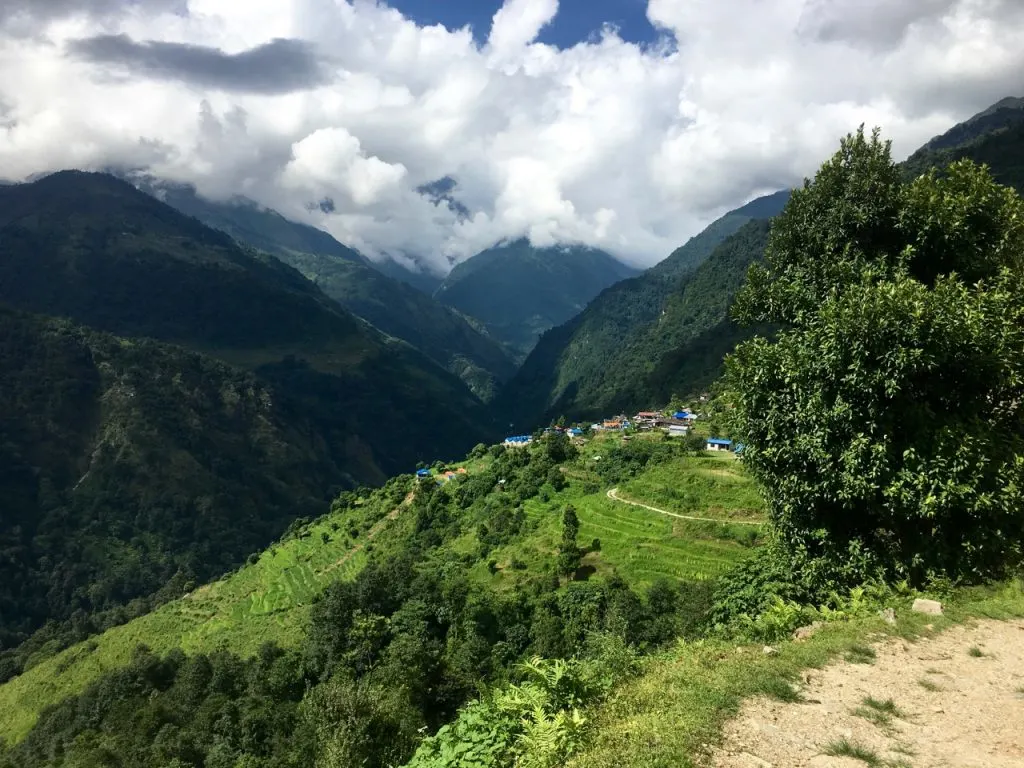
Use Caution at Creek Crossings
Hot weather can cause snow to melt rapidly, turning formerly placid creeks into raging torrents. Research the trail before you go to see if there are unbridged creek crossings that could be dangerous.
If you arrive at a fast-moving creek, be prepared to turn around in case it is not safe to cross. And remember that a creek you crossed in the morning may be running MUCH higher in the afternoon when you have to cross it again on your return journey.
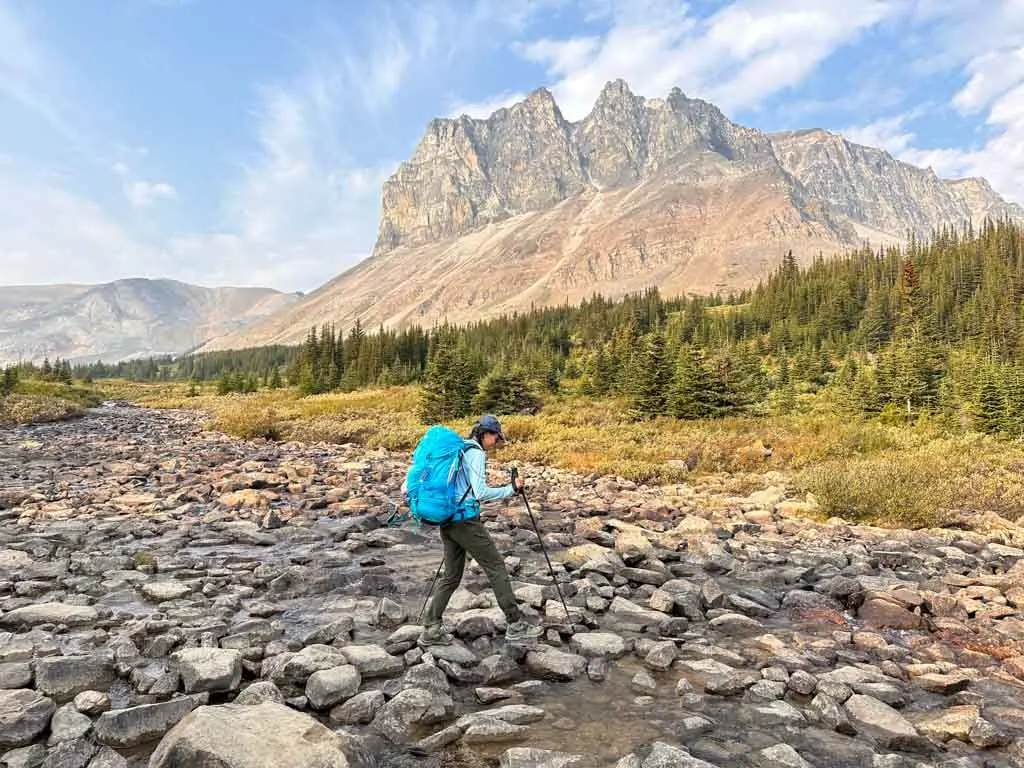
Skip the Hike If It Is Really Hot
Every year hikers die in extremely hot temperatures in places like Death Valley National Park. If the forecast is for temperatures over 100°F /38°C, consider skipping the hike. Hiking in weather that hot can be dangerous. Save the hike for another day – it’s not worth your life. (Psst – my guide to weather apps for hikers has tips for accurate backcountry forecasts.)
Final Thoughts
It can be tempting to stick to your normal hiking plans when it’s really hot out. But it pays to be a bit cautious. When the temperature soars, I dial back the intensity, pick a forested hike to a lake, and wear sun protection. I know if I don’t, I’ll feel awful and won’t enjoy my hike.
What are your top tips for hiking in hot weather? Let me know in the comments.
READ NEXT:
- Tips and Tricks for Hiking in the Desert
- The Best Weather Apps for Hiking
- Best Sun Hoodies for Hiking
- 16 Things to do Before a Hike
- The 10 Essentials: Things You Should Bring on Every Hike
- How to Prevent Blisters When Hiking
- Lake O’Hara Packing Lists for Hikers and Campers - April 25, 2025
- BC Parks Day Passes 2025 – Everything You Need to Know - April 24, 2025
- Best Women’s Hiking Pants (Picks for Every Body Type) - April 21, 2025

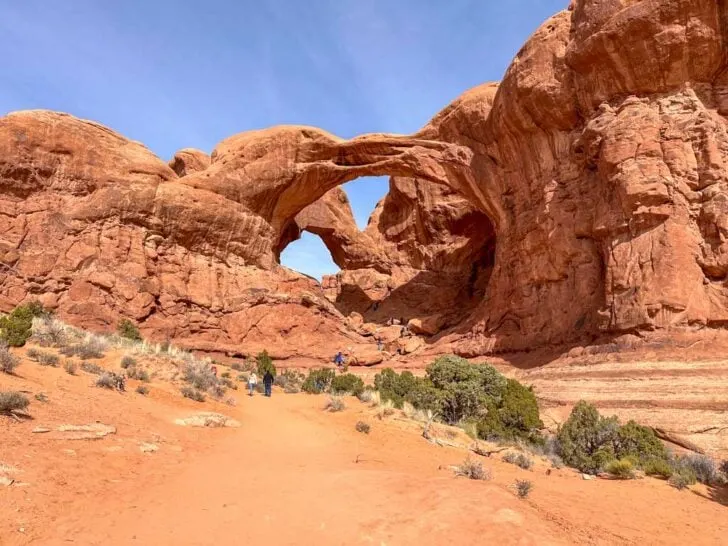
Judy
Tuesday 8th of August 2017
What about the old standards like dipping your hat or your shirt in a stream, or even soaking your packtowel and draping it around your neck?
Taryn Eyton
Wednesday 9th of August 2017
Good suggestion Judy... can't believe I forgot about that one :)